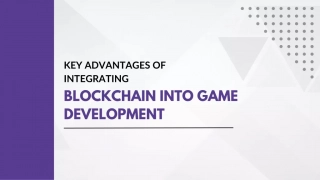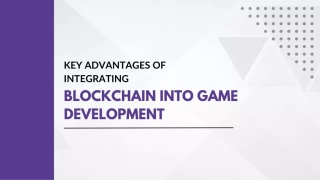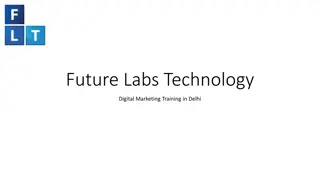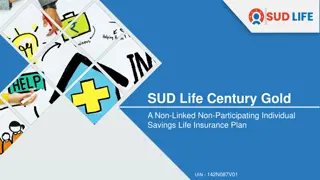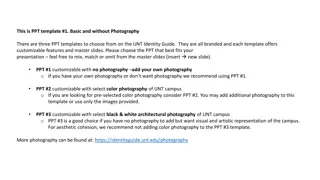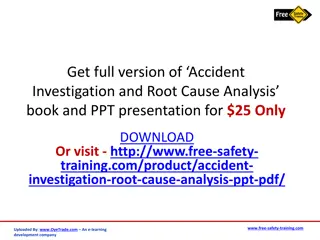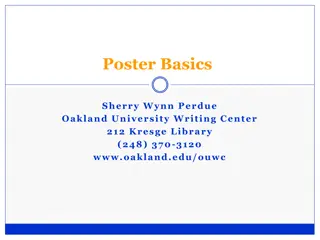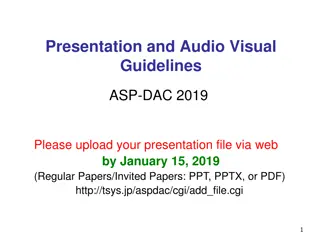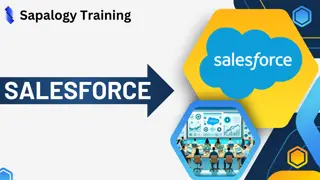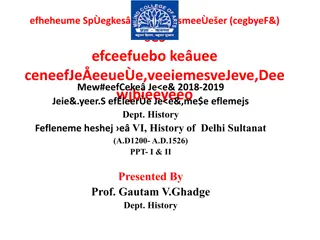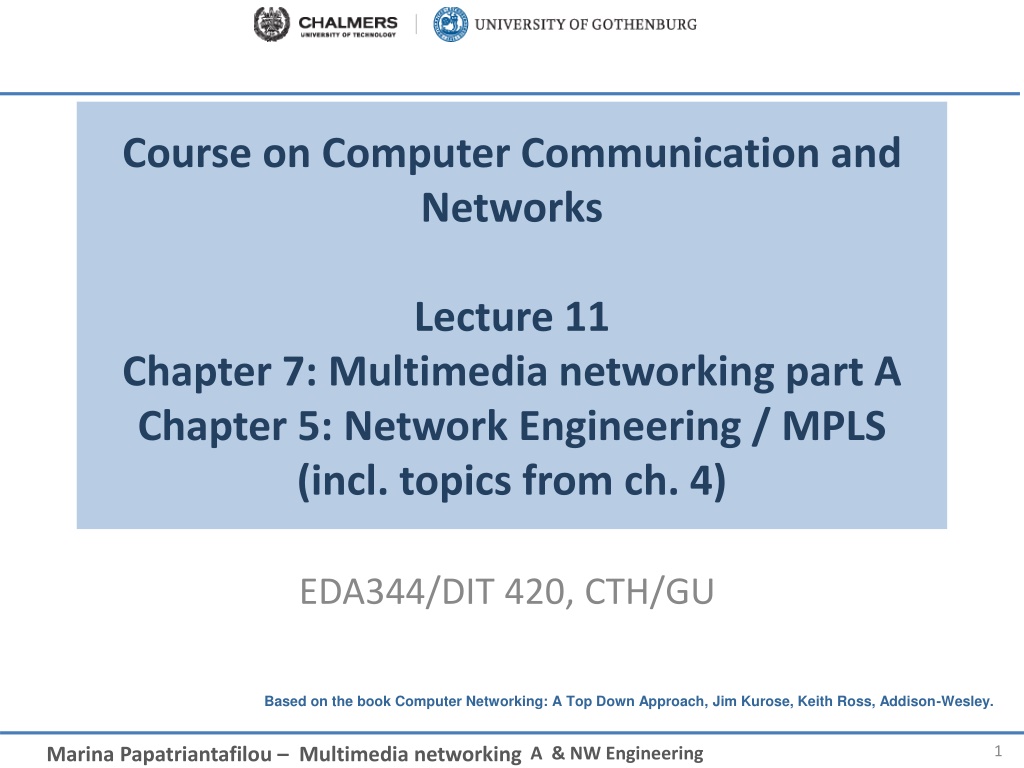
Multimedia Networking and Applications Overview
Explore the intricacies of multimedia networking and applications, covering topics such as audio and video transmission, signal sampling, spatial coding, and application types like streaming and stored media. Understand the fundamental characteristics of multimedia networking, including delay sensitivity, jitter, and loss tolerance. Delve into the complexities of multimedia transmission over today's Internet, highlighting best-effort services and the challenges of balancing delay and loss tolerance.
Download Presentation

Please find below an Image/Link to download the presentation.
The content on the website is provided AS IS for your information and personal use only. It may not be sold, licensed, or shared on other websites without obtaining consent from the author. If you encounter any issues during the download, it is possible that the publisher has removed the file from their server.
You are allowed to download the files provided on this website for personal or commercial use, subject to the condition that they are used lawfully. All files are the property of their respective owners.
The content on the website is provided AS IS for your information and personal use only. It may not be sold, licensed, or shared on other websites without obtaining consent from the author.
E N D
Presentation Transcript
Course on Computer Communication and Networks Lecture 11 Chapter 7: Multimedia networking part A Chapter 5: Network Engineering / MPLS (incl. topics from ch. 4) EDA344/DIT 420, CTH/GU Based on the book Computer Networking: A Top Down Approach, Jim Kurose, Keith Ross, Addison-Wesley. 1 Marina Papatriantafilou Multimedia networking A & NW Engineering
multimedia applications: network audio and video ( continuous media ) 7-2 Marina Papatriantafilou Multimedia networking A & NW Engineering
Multimedia: audio analog audio signal sampled at constant rate telephone: 8,000 samples/sec CD music: 44,100 samples/sec example: 8,000 samples/sec, 256 quantized values: 64,000 bps receiver converts bits back to analog signal: quantization quantized value of analog value error audio signal amplitude analog signal time example rates CD: 1.411 Mbps MP3: 96, 128, 160 kbps Internet telephony: 5.3 kbps and up sampling rate (N sample/sec) 7-3 Marina Papatriantafilou Multimedia networking A & NW Engineering
Multimedia: video spatial coding example: instead of sending N values of same color (all purple), send only two values: color value (purple) and number of repeated values (N) video: sequence of images (arrays of pixels) displayed at constant rate e.g. 24 images/sec CBR: (constant bit rate): video encoding rate fixed VBR: (variable bit rate): video encoding rate changes as amount of spatial, temporal coding changes examples: MPEG 1 (CD-ROM) 1.5 Mbps MPEG2 (DVD) 3-6 Mbps MPEG4 (often used in Internet, < 1 Mbps) ... ... frame i temporal coding example: instead of sending complete frame at i+1, send only differences from frame i frame i+1 Multmedia Networking 7-4 Marina Papatriantafilou Multimedia networking A & NW Engineering
Multimedia networking: application types streaming, stored audio, video streaming: can begin play before downloading entire file stored (at server): can transmit faster than audio/video will be rendered (implies storing/buffering at client) e.g., YouTube, Netflix, streaming live audio, video e.g., live sporting event, conversational voice/video interactive nature of human-to- human conversation limits delay tolerance; e.g., Skype Fundamental characteristics: typically delay sensitive end-to-end delay delay jitter loss tolerant: infrequent losses cause minor glitches antithesis with data, which are loss intolerant but delay tolerant. Jitter is the variability of packet delays within the same packet stream 7-5 Marina Papatriantafilou Multimedia networking A & NW Engineering
Multimedia Over Todays Internet best-effort service, no guarantees on delay, loss ? ? ? ? ? ? ? But you said multimedia apps require Delay/jitter (ie bandwidth) guarantees to be effective! ? ? ? ? Today s Internet multimedia applications use application-level techniques to mitigate (as best possible) effects of delay, loss; Also complementing with network engineering 6 Marina Papatriantafilou Multimedia networking A & NW Engineering
Solution Approaches in Internet To mitigate impact of best-effort protocols: Several applications use UDP to avoid TCP s ack-based progress (and slow start) Buffer content at client and control playback to remedy jitter Different error control methods (no ack) Exhaust all uses of caching, proxys, etc Adapt compression level to available bandwidth add more bandwidth Network engineering 7 Marina Papatriantafilou Multimedia networking A & NW Engineering
Roadmap Application Classes, challenges Today s representative technology recovery from jitter and loss Streaming protocols (Overlays) CDN: content distribution networks Traffic Engineering: First some historic flash-back MPLS Related: Tunneling -8 Marina Papatriantafilou Multimedia networking A & NW Engineering
Streaming: recovery from jitter playout delay small => higher loss rate constant bit rate video transmission client video reception constant bit rate video playout at client variable network delay buffered video time client playout delay client-side buffering and playout delay: compensate for network-added delay, delay jitter 9 Marina Papatriantafilou Multimedia networking A & NW Engineering
Client-side buffering, playout buffer fill level, Q(t) playout rate, e.g., CBR r variable fill rate, x(t) client application buffer, size B video server client 1. Initial fill of buffer until 2. playout begins at tp, 3. buffer fill level varies over time as fill rate x(t) varies and playout rate r is constant 10 Marina Papatriantafilou Multimedia networking A & NW Engineering
Client-side buffering, playout buffer fill level, Q(t) playout rate, e.g., CBR r variable fill rate, x(t) client application buffer, size B video server playout buffering: average fill rate (x), playout rate (r): x < r: buffer eventually empties (causing freezing of video playout until buffer again fills) x > r: need to have enough buffer-space to absorb variability in x(t) initial playout delay tradeoff: buffer starvation less likely with larger delay, but larger delay until user begins watching 11 Marina Papatriantafilou Multimedia networking A & NW Engineering
Roadmap Application Classes, challenges Today s representative technology recovery from jitter and loss Streaming protocols (Overlays) CDN: content distribution networks Traffic Engineering: First some historic flash-back MPLS Related: Tunneling -12 Marina Papatriantafilou Multimedia networking A & NW Engineering
Recovery From Packet Loss Forward Error Correction Eg. 1. through piggybacking Lower Quality Stream 13 Marina Papatriantafilou Multimedia networking A & NW Engineering
Recovery From Packet Loss/FEC (cont) 2. Interleaving: no redundancy, but can cause delay in playout beyond Real Time requirements Upon loss, have a set of partially filled chunks playout time must adapt to receipt of group 14 Marina Papatriantafilou Multimedia networking A & NW Engineering
Roadmap Application Classes, challenges Today s representative technology recovery from jitter and loss Streaming protocols (Overlays) CDN: content distribution networks Traffic Engineering: First some historic flash-back MPLS Related: Tunneling -15 Marina Papatriantafilou Multimedia networking A & NW Engineering
Real-Time Protocol (RTP) RFC 3550 RTP specifies packet structure for carrying audio, video data payload type (encoding) sequence numbering time stamping RTP does not provide any mechanism to ensure timely data delivery or other guarantees RTP encapsulation only seen at end systems RTP packets encapsulated in UDP segments interoperability: if two Internet phone applications run RTP, then they may be able to work together 7-16 Marina Papatriantafilou Multimedia networking A & NW Engineering
Streaming multimedia: UDP server sends at rate appropriate for client often: send rate = encoding rate = constant rate send rate can be oblivious to congestion levels (is this good? selfish?) short playout delay to remove network jitter BUT: UDP may not go through firewalls 17 Marina Papatriantafilou Multimedia networking A & NW Engineering
Streaming multimedia: HTTP (ie through TCP) multimedia file retrieved via HTTP GET send at maximum possible rate under TCP variable rate, x(t) video file TCP send buffer server TCP receive buffer application playout buffer client fill rate fluctuates due to TCP congestion control, retransmissions (in-order delivery) larger playout delay: to smooth TCP saw-tooth delivery rate HTTP/TCP passes easier through firewalls 18 Marina Papatriantafilou Multimedia networking A & NW Engineering
Streaming multimedia: DASH: Dynamic, Adaptive Streaming over HTTP 1.5 Mbps encoding 28.8 Kbps encoding server: divides video file into multiple chunks each chunk stored, encoded at different rates manifest file: provides URLs for different chunks client: periodically measures server-to-client bandwidth consulting manifest, requests one chunk at a time, at appropriate coding rate can choose different coding rates at different points in time (depending on available bandwidth at time) 7-19 Marina Papatriantafilou Multimedia networking A & NW Engineering
Roadmap Application Classes, challenges Today s representative technology recovery from jitter and loss Streaming protocols (Overlays) CDN: content distribution networks Traffic Engineering: First some historic flash-back MPLS Related: Tunneling -20 Marina Papatriantafilou Multimedia networking A & NW Engineering
Content distribution networks(CDNs) Content replication Scalability big problem to stream large files from single origin server in real time to > 100000 end hosts origin server A solution: replicate content at several/many servers content downloaded to CDN servers ahead of time content close to user avoids impairments (loss, delay) of sending content over long paths CDN server typically in edge/access network Resembles DNS and overlay networks in P2P applications CDN distribution node CDN server in S. America CDN server CDN server in Asia in Europe Video link: http://vimeo.com/26469929 21 Marina Papatriantafilou Multimedia networking A & NW Engineering
CDN: simple content access scenario Bob (client) requests video http://netcinema.com/6Y7B23V video stored in CDN at http://KingCDN.com/NetC6y&B23V 1. Bob gets URL for for video http://netcinema.com/6Y7B23V from netcinema.com web page 2. resolve http://netcinema.com/6Y7B23V via Bob s local DNS 2 1 5 6. request video from KINGCDN server, streamed via HTTP 4&5. Resolve http://KingCDN.com/NetC6y&B23 via KingCDN s authoritative DNS, which returns IP address of KIingCDN server with video 3. netcinema s DNS returns URL http://KingCDN.com/NetC6y&B23V netcinema.com 4 3 netcinema s authorative DNS KingCDN authoritative DNS KingCDN.com 7-22 Marina Papatriantafilou Multimedia networking A & NW Engineering
Case study: Netflix upload copies of multiple versions of video to CDNs Amazon cloud Akamai CDN Netflix registration, accounting servers 3. Manifest file returned for requested video 2. Bob browses Netflix video Limelight CDN 2 3 1 1. Bob manages Netflix account Level-3 CDN 4. DASH streaming Netflix uploads copy of video to 3rdparty cloud create multiple version of movie (different encodings) in cloud upload versions from cloud to 3rdparty CDNs; user downloads the suitable encoding Marina Papatriantafilou Multimedia networking A & NW Engineering from them 7-23
Up to this point summary Internet Multimedia: bag of tricks use UDP to avoid TCP congestion control (delays) for time- sensitive traffic; or multiple TCP connections (DASH) Buffering and client-side adaptive playout delay: to compensate for delay error recovery (on top of UDP) FEC, interleaving, error concealment CDN: bring content closer to clients server side matches stream bandwidth to available client-to- server path bandwidth chose among pre-encoded stream rates dynamic server encoding rate Q: would all this be simpler with virtual-circuit routing? 24 Marina Papatriantafilou Multimedia networking A & NW Engineering
Roadmap Application Classes, challenges Today s representative technology recovery from jitter and loss Streaming protocols (Overlays) CDN: content distribution networks Traffic Engineering: First some historic flash-back MPLS Related: Tunneling -25 Marina Papatriantafilou Multimedia networking A & NW Engineering
Connecting to history Preparing the global networking infrastructure ATM principles: virtual-circuit networks: switches maintain state for each call small (48 byte payload, 5 byte header) fixed length cells (like packets) fast switching small size good for voice well-defined interface between network and user (think of classic telecom) Internet s IP: today s de facto standard for global data networking 1970/80 s: telco s develop ATM: competing network standard for carrying high-speed voice/data 26 Marina Papatriantafilou Multimedia networking A & NW Engineering
In parallel: the Internet concept: virtualizing networks differing in: addressing conventions packet formats error recovery routing 1974: multiple unconnected nets ARPAnet data-over-cable networks packet satellite network (Aloha) packet radio network satellite net ARPAnet "A Protocol for Packet Network Intercommunication", V. Cerf, R. Kahn, IEEE Transactions on Communications, May, 1974, pp. 637-648. 5: DataLink Layer 5-27 Marina Papatriantafilou Multimedia networking A & NW Engineering
The Internet: virtualizing networks Internetwork layer (IP): addressing: internetwork appears as single, uniform entity, despite underlying local network heterogeneity network of networks Gateway: embed internetwork packets in local packet format route (at internetwork level) to next gateway gateway satellite net ARPAnet 5-28 Marina Papatriantafilou Multimedia networking A & NW Engineering
ATM: network or link layer? Vision: end-to-end transport: ATM from desktop to desktop ATM is a network technology Reality: used to connect IP backbone routers IP over ATM ATM as switched link layer, connecting IP routers 29 Marina Papatriantafilou Multimedia networking A & NW Engineering
e.g. IP-Over-ATM Classic IP over eg Ethernet 3 networks (e.g., LAN segments) MAC and IP addresses IP over ATM replace network (e.g., LAN segment) with ATM network, (ATM + IP addresses) Run datagram routing on top of virtual-circuit routing . ATM network Ethernet LANs Ethernet LANs 5-30 Marina Papatriantafilou Multimedia networking A & NW Engineering
Cerf & Kahns Internetwork Architecture What is virtualized? two layers of addressing: internetwork and local network new layer (IP) makes everything homogeneous at internetwork layer underlying local network technology Cable, satellite, 56K telephone modem Ethernet, other LAN ATM MPLS (Multiprotocol Label Switching Protocol) invisible at internetwork layer. Looks like a link layer technology to IP 5: DataLink Layer 5-32 Marina Papatriantafilou Multimedia networking A & NW Engineering
Roadmap Application Classes, challenges Today s representative technology recovery from jitter and loss Streaming protocols (Overlays) CDN: content distribution networks Traffic Engineering: First some historic flash-back MPLS Related: Tunneling -33 Marina Papatriantafilou Multimedia networking A & NW Engineering
Multiprotocol label switching (MPLS) in IP networks: VC-inspired initial goal: speed up IP forwarding by using fixed length label (instead of IP address) to do forwarding borrowing ideas from Virtual Circuit (VC) approach but IP datagram still keeps IP address label-switched router forwards packets to outgoing interface based only on label value (don t inspect IP address) MPLS forwarding table distinct from IP forwarding tables PPP or Ethernet header IP header remainder of link-layer frame MPLS header MPLS router must co-exist with IP-only routers (relating concept: overlays, software-defined networking) label Exp S TTL 5 1 3 20 Marina Papatriantafilou Multimedia networking A & NW Engineering 5-34
MPLS versus IP paths R6 D R4 R3 R5 A R2 IP routing: path to destination determined by destination address alone IP router Link Layer 5-36 Marina Papatriantafilou Multimedia networking A & NW Engineering
MPLS versus IP paths entry router (R4) can use different MPLS routes to A based, e.g., on source address (needs MPLS-capable routers) R6 D R4 R3 R5 A R2 IP routing: path to destination determined by destination address alone IP-only router MPLS routing: path to destination can be based on source and dest. address fast reroute: precompute backup routes in case of link failure MPLS and IP router Link Layer 5-37 Marina Papatriantafilou Multimedia networking A & NW Engineering
MPLS forwarding tables Flexibilty allows Network Engineering (adapting Routing to suit different purposes, relates to Software-defined Networks) in out out label label dest interface 10 A 0 12 D 0 8 A 1 in out out label label dest interface 10 6 A 1 12 9 D 0 R6 0 0 D 1 1 R3 R4 R5 0 0 A R2 in out out label label dest interface 6 - R1 in out out label label dest interface 8 6 A 0 A 0 Link Layer 5-38 Marina Papatriantafilou Multimedia networking A & NW Engineering
Roadmap Application Classes, challenges Today s representative technology recovery from jitter and loss Streaming protocols (Overlays) CDN: content distribution networks Traffic Engineering: First some historic flash-back MPLS Related: Tunneling -39 Marina Papatriantafilou Multimedia networking A & NW Engineering
Tunneling: carrying traffic of a protocol as payload e.g. in transition from IPv4 to IPv6 not all routers can be upgraded simultaneously no flag days how can network operate with mixed IPv4 and IPv6 routers? tunneling: IPv6 datagram carried as payload in IPv4 datagram among IPv4 routers IPv6 header fields IPv4 header fields IPv4 payload IPv6 source dest addr IPv4 source, dest addr UDP/TCP payload IPv6 datagram IPv4 datagram Network Layer 40 Marina Papatriantafilou Multimedia networking A & NW Engineering
Tunneling (6in4 static tunnel) IPv4 tunnel (overlay link) connecting IPv6 routers A B E F logical view: IPv6 IPv6 IPv6 IPv6 C D A E B F physical view: IPv6 IPv6 IPv6 IPv6 IPv4 IPv4 src:B dest: E src:B dest: E flow: X src: A dest: F flow: X src: A dest: F Flow: X Src: A Dest: F Flow: X Src: A Dest: F data data data data A-to-B: IPv6 E-to-F: IPv6 B-to-C: IPv6 inside IPv4 B-to-C: IPv6 inside IPv4 41 Network Layer Marina Papatriantafilou Multimedia networking A & NW Engineering
Roadmap - Summary Application Classes, challenges Today s representative technology recovery from jitter and loss Streaming protocols (Overlays) CDN: content distribution networks Internet core and transport protocols do not provide guarantees for multimedia streaming traffic Applications take matters into own hands Bag of tricks and interesting evolving methods Another type of service at the core (VC-like) would imply a different situation But then the Internet core would be different Network Engineering to combine solutions (this is not the last world in stream-traffic, more to come soon ) 42 Marina Papatriantafilou Multimedia networking A & NW Engineering
Reading list, review questions, further study Upkar Varshney, Andy Snow, Matt McGivern, and Christi Howard. 2002. Voice over IP. Commun. ACM 45, 1 (January 2002), 89-96. DOI=10.1145/502269.502271 Jussi Kangasharju, James Roberts, Keith W. Ross, Object replication strategies in content distribution networks, Computer Communications, Volume 25, Issue 4, 1 March 2002, Pages 376- 383, ISSN 0140-3664, http://dx.doi.org/10.1016/S0140- 3664(01)00409-1. K.L Johnson, J.F Carr, M.S Day, M.F Kaashoek, The measured performance of content distribution networks, Computer Communications, Volume 24, Issue 2, 1 February 2001, Pages 202-206, ISSN 0140-3664, http://dx.doi.org/10.1016/S0140- 3664(00)00315-7. Eddie Kohler, Mark Handley, and Sally Floyd. 2006. Designing DCCP: congestion control without reliability. SIGCOMM Comput. Commun. Rev. 36, 4 (August 2006), 27-38. DOI=10.1145/1151659.1159918 http://doi.acm.org/10.1145/1151659.1159918 7.1 7.4 3.6.2 5.5.1 R7: 5, 6, 7, 8, 12, 14, 17 43 Marina Papatriantafilou Multimedia networking A & NW Engineering



